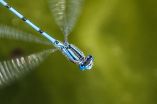(Press-News.org) OAK BROOK, Ill. (September 23, 2014) – Both patients and healthcare professionals believe diagnosis of extracolonic malignancy with screening computed tomography (CT) colonography greatly outweighs the potential disadvantages of subsequent radiologic or invasive follow-up tests precipitated by false-positive diagnoses, according to a new study published in the October issue of the journal Radiology.
Diagnostic tests used for cancer screening programs usually target a specific organ. However, when screening for colorectal cancer with CT colonography, abdominal and pelvic tissues outside the colon are imaged unavoidably, which can potentially detect disease in organs other than the primary target. These extracolonic findings present a clinical dilemma. Early diagnosis of important findings might offer life-saving benefits, but unnecessary investigation of ultimately irrelevant findings has physical, psychological and financial costs.
To determine how patients and healthcare professionals balance these factors, Steve Halligan, M.B.B.S., M.D., FRCP, FRCR, from the Centre for Medical Imaging at University College London in London, U.K., and colleagues conducted a discrete choice experiment, interviewing 52 adults (mean age 64.5 years) who were scheduled at the hospital for unrelated ultrasound exams and 50 health professionals (mean age 24.5 years) who requested, performed or interpreted colorectal imaging exams.
"There has been surprisingly little prior research relating to trade-offs. Asking patients and professionals to rank their preferences is uninformative because they stipulate an accurate, convenient, safe and cheap test," Dr. Halligan said. "In reality, these attributes are traded against one another: would you swap increased accuracy for less convenience? Discrete choice experiments investigate how attributes are traded against one another but are rarely used for imaging tests. Findings from discrete choice experiments may be controversial, but discussion of how to allocate increasingly scarce resources cannot be informed without the results of such experiments."
Participants undertook two separate experiments. In the first experiment, participants were told that false-positive extracolonic diagnosis would require unnecessary further imaging. Participants were instructed to assume the rates of such imaging to be 50 percent ultrasound, 45 percent CT, and 5 percent magnetic resonance imaging (MRI). Disadvantages of imaging were explained as follows: ultrasound and MRI were described as safe, but might cause inconvenience and anxiety. MRI was also described as noisy and associated with claustrophobia. CT was described as including a very small chance of cancer induction several years afterward.
In the second experiment, false-positive diagnoses led to biopsy, endoscopy or surgery. Participants were instructed to assume that approximately 50 percent of invasive tests would be surgical, 25 percent would be needle biopsy, and 25 percent would be endoscopy. Pain, bleeding, perforation, and a small risk of death were mentioned as possible complications.
"What we found was that both patients and healthcare professionals were very willing to trade false-positive diagnoses that resulted in unnecessary radiologic or invasive tests for a gain in diagnostic sensitivity," Dr. Halligan said.
The primary outcome measure was the maximum false-positive rate that the average participant was willing to accept in exchange for a one-in-600 chance of diagnosing an extracolonic malignancy, or the so-called tipping point.
When the consequence of extracolonic findings was radiologic testing, the average participant was prepared to tolerate at least a 99.8 percent rate of unnecessary additional radiologic tests to diagnose a single additional extracolonic malignancy. Overall, at a prevalence of one in 600 for potentially curable extracolonic malignancy, this corresponds to more than 599 unnecessary additional radiologic tests to find one potentially curable extracolonic malignancy.
When the consequence of extracolonic findings was invasive testing, the average participant was prepared to tolerate a 10 percent rate of unnecessary additional invasive tests in exchange for diagnosis of a single extracolonic malignancy. Overall, at population prevalence of one in 600, this corresponds to 60 additional invasive tests per extracolonic malignancy.
In both cases, the patients were willing to tolerate unnecessary additional tests at higher rates than the healthcare professionals.
"Because they are more informed about the costs and consequences, especially of additional invasive testing, healthcare professionals were slightly less prepared to tolerate as many false-positives as the patients were," Dr. Halligan said.
INFORMATION:
"Detection of Extracolonic Pathologic Findings with CT Colonography: A Discrete Choice Experiment of Perceived Benefits versus Harms." Collaborating with Dr. Halligan on this study were Andrew A. Plumb, M.A., MRCP, FRCR, Darren Boone, M.B.B.S., MRCS, FRCR, Heather Fitzke, B.Soc.Sci., Emma Helbren, M.B.Ch.B., FRCR, Susan Mallett, D.Phil., Shihua Zhu, M.Sc, Ph.D, Guiqing L. Yao, M.Sc., Ph.D., Nichola Bell, B.Sc., Alex Ghanouni, M.Sc., Christian von Wagner, Ph.D., Stuart A. Taylor, M.B.B.S., M.D., MRCP, FRCR, Douglas G. Altman, D.Sc., and Richard Lilford, Ph.D., FRCOG, FRCP, FFPH.
Radiology is edited by Herbert Y. Kressel, M.D., Harvard Medical School, Boston, Mass., and owned and published by the Radiological Society of North America, Inc.
RSNA is an association of more than 53,000 radiologists, radiation oncologists, medical physicists and related scientists promoting excellence in patient care and health care delivery through education, research and technologic innovation. The Society is based in Oak Brook, Ill. (RSNA.org)
For patient-friendly information on CT colonography, visit RadiologyInfo.org.
Patients accept false-positives to achieve diagnostic sensitivity
2014-09-23
ELSE PRESS RELEASES FROM THIS DATE:
Medical students who attended community college likelier to serve poor communities
2014-09-23
IMPACT
The community college system represents a potential source of student diversity for medical schools and physicians who will serve poor communities; however, there are significant challenges to enhancing the pipeline from community colleges to four-year universities to medical schools. The authors recommend that medical school and four-year university recruitment, outreach and admissions practices be more inclusive of community college students.
FINDINGS
Researchers from UCLA, UC San Francisco and San Jose City College found that, among students who apply to and ...
Study helps assess impact of temperature on belowground soil decomposition
2014-09-23
Hilo, Hawai`i–The Earth's soils store four times more carbon than the atmosphere and small changes in soil carbon storage can have a big effect on atmospheric greenhouse gas concentrations. A new paper in the journal Nature Climate Change concludes that climate warming does not accelerate soil organic carbon decomposition or affect soil carbon storage, despite increases in ecosystem productivity.
The research, led by U.S. Forest Service Research Ecologist Dr. Christian Giardina, with the agency's Institute of Pacific Islands Forestry, Pacific Southwest Research Station, ...
Facial masculinity not always a telling factor in mate selection
2014-09-23
EUGENE, Ore. -- Women living where rates of infectious disease are high, according to theory, prefer men with faces that shout testosterone when choosing a mate. However, an international study says not so much, says University of Oregon anthropologist Lawrence S. Sugiyama.
The new study, on which Sugiyama is one of 22 co-authors, ended with that theory crumbling amid patterns too subtle to detect when tested with 962 adults drawn from 12 populations living in various economic systems in 10 nations.
The study -- coordinated by Ian S. Penton-Voak of the School of Experimental ...
The mechanics of tissue growth
2014-09-23
PITTSBURGH – When the body forms new tissues during the healing process, cells must be able to communicate with each other. For years, scientists believed this communication happened primarily through chemical signaling. Now researchers at Carnegie Mellon University and the University of Pittsburgh have found that another dimension – mechanical communication – is equally if not more crucial. The findings, published in this week's issue of the Proceedings of the National Academy of Sciences, could lead to advancements in treatments for birth defects and therapies for cancer ...
Insects' fear limits boost from climate change, Dartmouth study shows
2014-09-23
Scientists often measure the effects of temperature on insects to predict how climate change will affect their distribution and abundance, but a Dartmouth study shows for the first time that insects' fear of their predators, in addition to temperature, ultimately limits how fast they grow.
"In other words, it's less about temperature and more about the overall environmental conditions that shape the growth, survival and distribution of insects." says the study's lead author Lauren Culler, an Arctic postdoctoral researcher at Dartmouth.
The study appears in the journal ...
Kessler Foundation researchers find foot drop stimulator beneficial in stroke rehab
2014-09-23
West Orange, NJ. September 23, 2014. Kessler Foundation scientists have published a study showing that use of a foot drop stimulator during a task-specific movement for 4 weeks can retrain the neuromuscular system. This finding indicates that applying the foot drop stimulator as rehabilitation intervention may facilitate recovery from this common complication of stroke. "EMG of the tibialis anterior demonstrates a training effect after utilization of a foot drop stimulator," was published online ahead of print on July 2 by NeuroRehabilitation (doi:10.3233/NRE-141126). The ...
'Brain Breaks' increase activity, educational performance in elementary schools
2014-09-23
CORVALLIS, Ore. – A recent Oregon survey about an exercise DVD that adds short breaks of physical activity into the daily routine of elementary school students found it had a high level of popularity with both students and teachers, and offered clear advantages for overly sedentary educational programs.
Called "Brain Breaks," the DVD was developed and produced by the Healthy Youth Program of the Linus Pauling Institute at Oregon State University, and is available nationally.
Brain Breaks leads children in 5-7 minute segments of physical activity, demonstrated by OSU ...
Surveys may assess language more than attitudes, says study involving CU-Boulder
2014-09-23
Scientists who study patterns in survey results might be dealing with data on language rather than what they're really after -- attitudes -- according to an international study involving the University of Colorado Boulder.
The study, published in the journal PLOS ONE, found that people naturally responded to surveys by selecting answer options that were similar in language to each other as they navigated from one question to another, even when the similarities were subtle.
For the study, researchers looked specifically at surveys on organizational behavior, such as ...
Researchers reveal new rock formation in Colorado
2014-09-23
Boulder, Colo., USA - An astonishing new rock formation has been revealed in the Colorado Rockies, and it exists in a deeply perplexing relationship with older rocks. Named the Tava sandstone, this sedimentary rock forms intrusions within the ancient granites and gneisses that form the backbone of the Front Range. The relationship is fascinating because it is backward: ordinarily, it is igneous rocks such as granite that would that intrude into sedimentary rocks.
According to authors Christine Smith Siddoway and George E. Gehrels, to find sandstone injected into granite ...
Note to young men: Fat doesn't pay
2014-09-23
Men who are already obese as teenagers could grow up to earn up to 18 percent less than their peers of normal weight. So says Petter Lundborg of Lund University, Paul Nystedt of Jönköping University and Dan-olof Rooth of Linneas University and Lund University, all in Sweden. The team compared extensive information from Sweden, the United Kingdom and the United States, and the results are published in Springer's journal Demography.
The researchers analyzed large-scale data of 145,193 Swedish-born brothers who enlisted in the Swedish National Service for mandatory military ...



